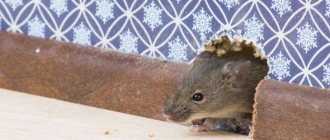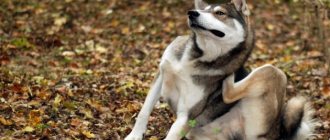A country house is wonderful. Almost every city dweller dreams of owning their own land. And when the dream is realized, the owner of the “estate” is faced with a pressing problem: how to keep the dogs away from the property? A dog, of course, is considered a man's friend. But only if it is your own dog, whose character and habits are well known, and whose health is maintained in proper condition. And then, when it is known for sure that he does not rush at people without a command.
Meanwhile, in dacha cooperatives, the question of how to discourage stray dogs from the site is often very pressing. Dogs are brought or fed during the summer by frivolous summer residents. When they leave, they abandon them to their fate; the animals gather in packs - and begin to terrorize the area with a radius of ten kilometers.
It's worth fighting
Many summer residents refuse to think about how to keep dogs away from their property, feeling sorry for the unfortunate animals. However, they should remember that stray flocks are dangerous for both people and pets. Moreover, the harm caused to homeless animals can be different.
In the first place, of course, are bodily injuries. Aggressive tramps sometimes attack completely spontaneously. At least for no apparent reason. And if a domestic dog is controlled by its owner (albeit often not fully), then a stray dog is uncontrollable. And his aggression is fueled by mental disorders - and they appear in the animal after a few months, or maximum after two years of homeless life. Dog attacks result in serious injuries.
Stray flocks cause no less harm to health. And everyone – from birds to humans. Even mice become infected with worms, rabies, and lichen, spreading the infection throughout the home. And skin diseases spread directly - they can be obtained by petting a sick dog (which kids love to do) or by contact with an object that he touched.
So you need to ward off someone else’s dog as quickly as possible, while there is not much chance of contracting an infection. And you need to do this before she attacks your Bobik or Murka.
How to get rid of unwanted pets?
It often happens that other people’s pets come into the territory of owners who don’t even have a dog. Their marks can have a detrimental effect on lawns, carefully planted plants and shrubs. Moreover, as soon as one dog pees in the garden bed, the smell begins to attract a pack from all over the area. But you shouldn’t rush to give in to such invasions; there are many methods for dealing with “uninvited guests.” In this case, it is not the beds that need to be protected, but the entire garden plot.
Lavender or thorny bushes
Plant plants that do not have a pleasant scent for dogs, such as lavender. This way you will create a natural repellent barrier.
Fence
The best remedy for uninvited guests is, of course, a good fence. Of course, a dog looking for a secluded place will choose an unfenced area. Periodically check along the fence for any digs made by animals. Applying current to the fence is used only as a last resort - this can be dangerous not only for dogs or cats, but also for people.
Alternatively, you can use a repeller with ultrasonic radiation. The device is installed near the location of the dog gathering. As the animal approaches, the motion sensor will be triggered and automatically release ultrasonic waves. Dogs are too sensitive to this range and will rush to leave your garden as quickly as possible.
Preventive measures
In order not to rack your brains over how to scare a dog away from your property, you must first take care of creating uncomfortable conditions for it. This means that under no circumstances should you feed a dog (and especially a pack) on your own land and near it. In addition, you should check if the dogs have an easy way to find food. For example, at a temporary landfill or trash bin. Experts say that sometimes one such gesture of attention is enough - and the animal will consider your area to be its own. Even trash cans should be covered with fairly heavy lids, since dogs are very good jumpers.
In addition to food, dogs require shelter to rest, reproduce, and raise young. So the ventilation vents should be covered with a strong mesh, and the doors to the utility rooms should be locked with at least a latch. If you want to know how to ward off cats, we recommend reading the article: https://fb.ru/article/192475/kak-otvadit-koshek-ot-uchastka-kak-otvadit-koshek-gadit-na-uchastke.
Chemical
Dogs are wary of any strong or artificial odors, so almost all chemicals make them retreat. Surely you have noticed more than once how animals begin to avoid trees after applying whitewash.
Bleach is a powerful gas attack
Shaggy friends can't stand her smell. It is extremely rare to find pets that can easily tolerate the smell of chlorine. If there is a cat living in the house with a dog, we advise you to choose another option. The purr of bleach is exciting and can make you want to mark.
Carbide
Welding carbide is slightly inferior to the previous product. It is less odorous, but this can even be considered a plus. If the dog immediately understands what is required of it, why go to extreme measures? Please note that when carbide is mixed with water, a chemical reaction begins and an alkali is released. The latter can damage the coating or harm indoor plants.
Air freshener with citrus scent
A sensitive dog will simply leave the room when it smells it. The main disadvantage of the product is its fragility. The freshener disappears quickly.
Naphthalene
In some cases it makes sense to use naphthalene. It will save things not only from companion bites, but also from moths. The only drawback is the smell is too strong. Being in a room “scented” with mothballs will be difficult not only for a dog, but also for a person.
Reliable fencing
One of the most reliable means of keeping dogs away from a property is to surround it with a fence. Quite strong and tall - one and a half to two meters, no less. Animals prefer the easy way. They would rather look for a territory with open access than with difficult access. The fence will have to be inspected regularly in order to notice tunnels from the outside in time. It is also recommended to secure barbed wire or boards with nails protruding from the outside along the lower perimeter.
Another recommended step is to pull a fishing line low, not high from the ground, and hang tins on it with pebbles or small pieces of iron poured inside. The hole must be sealed so that the “filling” does not spill out. The dog will cling to the fishing line, the rattles will make sounds, and the animal will be scared, since it will not be able to calculate the source of the noise and the reason for its appearance. This, by the way, is also a good way to discourage the neighbor’s dog from coming to the site. Although it wouldn't hurt to talk to her owner either.
Plants
Mice cannot tolerate the smell of certain plants, which are called natural repellents.
Sagebrush
The leaves and stems of wormwood contain an essential substance called thujone, which gives it a specific pungent, bitterish odor. The aroma of this herb repels rodents. Bundles of dry or fresh plants can be placed in residential and commercial premises. You can smoke pests out of holes by burning bunches of grass in front of the entrances.
Sagebrush
Tansy
A herbaceous plant with umbels of yellow flowers is widespread throughout Russia. The flowers have a sharp, slightly sweetish, spicy scent that repels mice. Fresh plants in bunches are laid out in sheds and cellars.
Tansy
Elder
The shoots and flowers of the bush contain tannins and hydrocyanic acid - substances with a pungent odor, poisonous to mammals. Shrubs can be planted around fruit trees; for the winter, elderberry branches are tied to the tree trunk.
Elder
Blackroot
The plant has long been used in rural areas to repel and bait rodents. A few branches in the center of a haystack will prevent mice from building a nest in it. The juice and decoction of the plant are used as poison in rat bait.
The herbaceous plant can be planted on the site next to outbuildings and fruit trees. Dry rhizomes, stems, and seeds can be laid out indoors, in the trunk of a car.
Blackroot
Ledum
The name of this evergreen shrub, common in temperate and northern latitudes, comes from the old Russian word “to poison, to suffocate.” All parts of the plant are poisonous.
The smell can cause headaches in humans; it should be used with caution. To repel mice, fresh leaves and branches are laid out indoors
Ledum
Mint
All representatives of the Lamiaceae family, that is, varieties of mint and lemon balm, contain organic substances with a pungent odor - menthol, various acids. Mice avoid areas planted with mint.
Mice in the apartment will be repelled by plants planted in pots. For these purposes, you can also lay out bunches of dried plants.
Mint
Chamomile
The medicinal plant is widespread and is considered a weed by gardeners. To repel mice, you can scatter dried crushed or whole flowers near their habitats and place them directly in holes and passages.
Chamomile
How to keep dogs away with your own dog
At the dacha or in a country house, almost every owner keeps a guard dog. And usually of rather large sizes. If stray animals begin to look into your territory, use your watchman for its intended purpose: put him on a leash and systematically walk around the entire perimeter. During the walk, you should wait patiently every time the dog carefully sniffs something: this behavior indicates that a strange dog has noticed there.
In the case when your pet is small or female, negotiate with one of the neighbors who has a hefty male. Both you are protected and the dog is pleased (they say, you have expanded the territory), and your neighbor will not lose out if after the procedure you invite him for a glass of tea.
How to toilet train a puppy?
If the dog is still small, then, in general, there is no problem. Your pet will learn to go outside during the first year of life.
Important Puppies do not know how to endure and therefore “go” where they have time. It cannot be any other way. Scolding a puppy can only make things worse. However, you can teach your baby to use the toilet, which is discussed below.
To protect your apartment from the smell of dog urine and feces, it is advisable to allocate a small space on the flooring that is easy to clean as a toilet. You can also cover an area of the floor with an absorbent blanket. The most important rule is to try not to punish the dog for “bad” behavior, but also don’t particularly praise it for “good” behavior, even if it was done in a designated area, since, in the long term, the dog should get used to the street. As a rule, before the first vaccinations, the puppy cannot be taken for walks, which is why he is temporarily taught to use the toilet indoors.
Use newspapers and special diapers for dogs. You should bring the puppy to them as often as possible: when he has eaten, he just woke up when you saw that he began to sniff the floor or spin around in place. Praise for “correct” urination. Yelling at a dog if it has already committed a “bad” action is unacceptable; it will not understand what its fault is. Aggression can only frighten the puppy; he will simply begin to be afraid and avoid his owner.
Tip If you see that the baby is starting to try on the “pee-pee”, throw the keys on the floor or hit your hands so that he is distracted, and then pick him up and immediately take him to the diaper or outside. In your hands, the dog will try to be the most restrained, and if you lead him on a leash, he can leave a “gift” right on the staircase.
Odor repellents
A dog's sense of smell is 60 times sharper than a human's. And this should be used when developing a plan on how to drive dogs away from the site. It is proposed to water the perimeter of your land with diluted ammonia. It is advisable to make 2-3 “border stripes” with a distance between them of 15-20 cm. The “aroma” perceived by a person will disappear in a matter of hours, but dogs will feel it for a long time.
Another option: for processing, use a mixture of ground pepper and shag. As a last resort, you can even pour out the remaining tobacco from the cigarette butts.
They say that citrus fruits are very effective as a repellent. The peels of lemons or oranges are finely chopped and used to delineate the restricted area.
Experienced summer residents, who have been working on the task of scaring dogs away from the site for many years, know well. They strongly recommend isopropyl alcohol. It is not necessary to water the entire perimeter; it is enough to place swabs soaked in alcohol at a distance of 30-40 centimeters.
You can also do this with vinegar. But it can have a bad effect on the quality of the soil, so it is recommended to place sponges doused with it on pebbles. Or soak a rag in vinegar and tie it along the bottom of the fence.
Natural
Black pepper is considered the best option
Not only does it have a pungent odor, but it also tastes unpleasant. However, here lies the main danger: the pet can burn the mucous membranes. This is especially true for crushed pepper. Spicy powder often settles on the nose. You can get rid of the negative consequences if you wrap pieces of pulp or powder in damp gauze. The effect will be weaker, but it will be safer. Another way is to rub things with pepper.
Dogs don't like tobacco
You can simply unroll a cigarette and place the contents near your shoes, for example. Sometimes pets ignore the pungent aroma and try to swallow the repeller. In this case, it is better to make an infusion: it is safer. Fill the contents of one cigarette with 100 ml of boiling water and remove the sediment after 40 minutes. You can sprinkle the liquid on the place where the dog gets into the habit of relieving himself.
Citrus fruits irritate dogs
This is a universal method of protection. Preferred options are grapefruit and lemon. They have the strongest odor. Orange and tangerine have a weaker aroma, but can still repel some animals. You can leave the slices or zest so that your pet will lose interest in spoiling things, or rub the peel on something.
Another effective way is citrus essential oils. Their scent will last much longer. Just apply a few drops to a cotton pad and leave it in the restricted area. However, for all their advantages, essential oils have an obvious drawback: they are strong allergens. Carefully monitor the patient’s reaction and, if suspicious symptoms appear, prefer a different method.
Hellebore herbs - volcogon
It’s not for nothing that the plant was named that way. Previously, hunters always stocked up on greens. At night they left grass on their backpacks to prevent wolves from getting to the contents. Unfortunately, the plant contains toxic substances, so it must be handled with extreme care.
Ultrasound to the rescue
If scent repellers do not work, move on to the next item in the list of ways to repel someone else’s dog from your area. The industry offers a huge variety of ultrasonic devices designed to repel animals. There are pocket options, and there are stationary ones. You need to choose a model that produces a frequency of at least 21 kHz and has a power of at least 100 dB. Another important requirement when purchasing: a strong, well-insulated case. After all, the device will be used “in the field”, which means it must not allow moisture to pass through and not break under the weight of an accidentally fallen branch.
Some restrictions
Ultrasonic repeller also has its drawbacks. Firstly, it works on everyone - both domestic animals and birds. So your Barsik may well go looking for a better life, and the winged defenders of the garden will fly around him, which will have a bad effect on the harvest.
Secondly, not all dogs react to ultrasound in the way we need. Those who are hard of hearing will simply not hear it. But those who are mad or who have undergone special training will ignore it. There is evidence that even phlegmatic, calm dogs are quite indifferent to ultrasound.
Water repellent
A trickle of water that suddenly arrives from somewhere will undoubtedly scare the dog away. Investments in this case are small: a sprinkler is available in all dacha farms, all that remains is to equip it with a motion sensor.
But this method also has its drawbacks. Among them is a reaction to any moving object larger than a mouse (child, cat, squirrel). Consequently, water consumption will seriously affect the budget.
In addition, such frequent “watering” can lead to waterlogging of the area and the death of plants on it. So the technique is only suitable in the initial stages, when the dog is just sniffing your territory.
Thuja is the most popular conifer.
Among the various exotic coniferous trees, thuja occidentalis occupies a strong dominant position. This is the most popular plant among visitors to nurseries and garden centers; rare landscape projects today can be done without the use of thuja. Plantings of this tree and shrub plant are found in parks, squares, and summer cottages in both big cities and small towns. Thuja has become a characteristic element of the Belarusian landscape. And it came to Europe from North America, where it naturally grows in the eastern part of the continent.
Thuja forms vary in height, size and crown shape, and have different growth rates. There are columnar, pyramidal, spherical, cushion-shaped, heather-shaped crown shapes. The color of the needles is also varied - from emerald green to golden and whitish.
The most popular among landscapers and amateur gardeners is the compact cone-shaped thuja Brabant with densely growing branches. It is distinguished by its rapid growth, has a height of 15-20 m and a crown diameter of 6 m. Thuja Smaragd has similar properties. The plant received its name for the emerald color of the needles and a very narrow cone-shaped shape with densely spaced branches. The plant reaches a height of 5-7m and looks especially good in single plantings and small groups. Thuja occidentalis Columna has a columnar shape. In terms of habit, this thuja resembles a cypress, growing up to 8 m in height and 1.5 m in width. All three of these species can be successfully used in creating a hedge (in some cases, the effect of a hedge is achieved without pruning).
Other cone-shaped forms of western thuja are also known: Europe Gold - a slow-growing form 4 m high, with golden-yellow needles; Holmstrup - dwarf thuja with green needles, 3-4 m in height; Sunkist - narrow cone-shaped, very dense and compressed, with golden-yellow needles, up to 4-5 m high; thuja with golden needles Ellwangeriana Aurea.
Pyramidal and columnar thujas serve as decoration for regular and landscape compositions in parks and squares, giving objects solemnity and pomp. These forms are used in alley plantings, on boulevards and when creating hedges and bosquets. When choosing a planting site for tall trees, keep in mind that trees planted near buildings will quickly grow, darken the windows, and the roots will damage the foundation and blind area.
Low-growing (dwarf) forms of thuja with various shades of needles, along with other types of conifers, will serve as decoration for rocky gardens, rock gardens and alpine slides. The spherical thuja western Danica with green needles reaches 0.6-1 m in height in 20 years; Thuja occidentalis Recurva nana is a dwarf plant with a cone-shaped shape, grows up to 2 m; Reingold form - a flat-growing, semicircular plant with golden-yellow branches; Tiny Tim form - a slowly growing bush up to 0.5-1 m high with branches twisted in the form of shells. The spherical thuja Globosa with a diameter of 1.5 m is also widely known.
Group plantings, where different forms of thuja are used, are highly decorative. The combination with flowering trees and shrubs, as well as plants with original foliage colors, creates a colorful picture throughout the year. When creating landscape groups, the biological characteristics of each plant should be taken into account. The tallest plants are planted in the center or in the background, and the shortest plants are planted in front or on the sides, as their size decreases.
Globular and bush-shaped thujas are good in single and group plantings. Without cutting, they retain their shape throughout their lives. But over time, the bush “falls apart” into individual stems and loses its decorative effect. Such thujas are not suitable for hedges, but they look good in linear plantings along paths and on ridges.
Often, wanting to immediately get a spectacular picture, gardeners try to plant coniferous plants close to each other, without taking into account their growth rate, crown size and shade tolerance. By saturating group plantings with a large number of different species and forms, we create a motley picture in which it is impossible to appreciate the beauty of each plant. It is desirable that the number of trees and shrubs in a group does not exceed 5-7 pieces.
When planted very densely, the needles and branches, not receiving enough light, quickly die, the stem is exposed, and the decorative effect is lost, which is not restored even over time.
The right remedy
Scaring dogs away from your area is a temporary measure. The flock will find refuge in an abandoned dacha or in a nearby forest plantation. And it will continue to pose a danger. It is necessary to involve professionals in the fight against stray animals. Call the catching service (they are both state-owned and licensed private), or the sanitary and epidemiological station - its employees are required to respond to a message about a potential source of infection. Write statements of complaint to local authorities. And get other site owners involved. The higher the “wave”, the greater the likelihood of a reaction to messages.
What not to do
Do not apply current to the fence. It can also pose a danger to people. If a passerby, guest or one of your neighbors receives an electric shock, you will have to be legally responsible for the injuries and injuries caused.
No need to spread the poison. Firstly, both pets and children can become poisoned. Secondly, cruelty to animals is a crime, and from the point of view of the law, it makes no difference whether a dog is a pet or a stray. If someone writes a complaint, you will be in trouble. Thirdly, many poisons have a bad effect on soils. Fourthly, something needs to be done with the corpses. And it’s not a fact that the dog won’t die somewhere in a hard-to-reach place, as a result of which the entire village will stink of carrion. In the end, such actions are simply unethical. It’s better to fight in civilized ways.
Comparison table of 8 methods and drugs for dogs
| Method/preparation | Advantages | Flaws | Grade |
| Taste repellent | The most effective repellent, there is no unpleasant odor, does not visually spoil the environment, you can prepare it yourself and save money | Possible allergic reaction; depends on the dogs preference | 10 |
| Smell repellent | Some smells (like citrus) are pleasant to humans; do not visually spoil the environment; you can cook it yourself and save money | Some odors are unpleasant to humans; less effective than affecting taste; an allergic reaction is possible; depends on the dogs preference | 8 |
| Water repeller with motion sensor | Does not require any time; simultaneously irrigates the land; does not depend on the dogs' preferences | Reacts to any movements; excessive water consumption is possible; may cost more financially than expected | 9 |
| Changing your dog's diet | Dilutes urine and reduces damage to grass | There are no scientific studies confirming the effectiveness of this method; may harm the dog; may have the opposite effect - the dog will urinate more often | 5 |
| Training | The most effective method | Requires time, patience and persistence | 10 |
| Fences | The best option to isolate yourself from neighbors or wild dogs | The inside of the garden looks unaesthetic; low fences act as a psychological barrier | 10 |
| Electric fences | They act as not only a physical, but also a psychological barrier; the best option to isolate yourself from neighbors or wild dogs | May cause harm to pets; large wild animals can damage the structure; ineffective during snowstorms; it is necessary to constantly check the voltage level | 9 |
| Pouring water on the area where the dog urinated | Reduces damage level | It only makes sense to water immediately after the dog has urinated; you need to constantly monitor the dog and have a basin of water or a hose with you | 6 |











